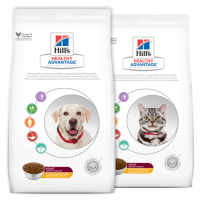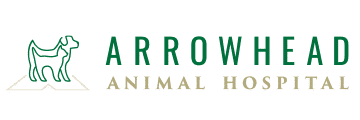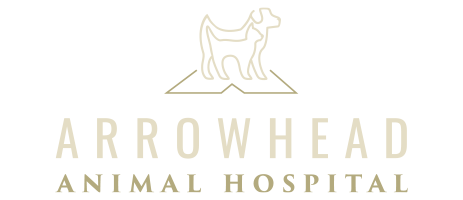
At Arrowhead Animal Hospital, we take pet nutritional needs very seriously and understand the impact that nutrition has on a pet’s overall health and wellness. There are many factors to consider when it comes to your pet’s nutritional needs – such as breed, age, lifestyle, weight, and their food preference. For healthy dogs and cats that do not require a prescription diet, we recommend Hill’s Healthy Advantage. This food is available in both dry and canned variety for cats and dogs and is designed to provide your pet with the appropriate nutritional needs for their life stage.
Or call us at (303) 469-1616.
Choosing the Right Food for Your Pet
Look for AAFCO Guidelines
The AAFCO is the Association of American Feed Control Officials, an organization that sets standards for pet foods in the United States. When choosing a pet food, be sure to look for a nutritional adequacy claim on the packaging that indicates if the food is “formulated to meet or exceed the nutritional levels established by the AAFCO nutritional profiles” or that “animal feeding tests using AAFCO procedures substantiate that the pet food provides complete and balanced nutrition” for the life stage of your animal. Food that has gone through AAFCO trials is safer to feed pets. Be sure to not use any foods indicated for “intermittent” or “supplemental” use long-term unless directed by your veterinarian.
Consider Your Pet’s Needs
Your pet’s nutritional needs will vary based on their age, size, species, and any health conditions they might have. You need to consider your pet’s lifestyle and life stage when choosing a food, as well as deciding their feeding schedule. As pets age, they usually become less active, leading to potential issues with obesity, which can then lead to heart disease. Age-specific diets for senior pets are designed to keep your pet’s weight under control and reduce consumption of nutrients that are risk factors for the development of diseases.
Kittens transition from milk to solid food at around five to six weeks old and should be eating solid food by eight weeks. Kittens require an age-specific diet and meals should be spaced out to four meals a day for up to twelve weeks, three meals a day up to sixteen weeks, and two meals a day from sixteen weeks onward.
Puppies should also be consuming solid food by eight weeks of age, preferably a food labeled as a “complete puppy diet.” Meals should be offered to puppies two to three times per day up to about six months old and can then be decreased to one to two times per day. No matter the age and nutritional needs of your pet, make sure they always have fresh water available.
If you need specific diet recommendations for your pet, visit us at Arrowhead Animal Hospital in Westminster, CO for a nutrition consultation.
Read the Labels Carefully
Not only can food labels indicate if an AAFCO trial was performed or if the food is appropriate for your pet’s life stage, but they can also give valuable insight into the quality of the food. When choosing a food to meet your pet’s nutritional needs, pay close attention to the nutrition adequacy statement, list of ingredients, feeding directions, and guaranteed analysis.
Walk-in or request an appointment online
Or call us at (303) 469-1616.


